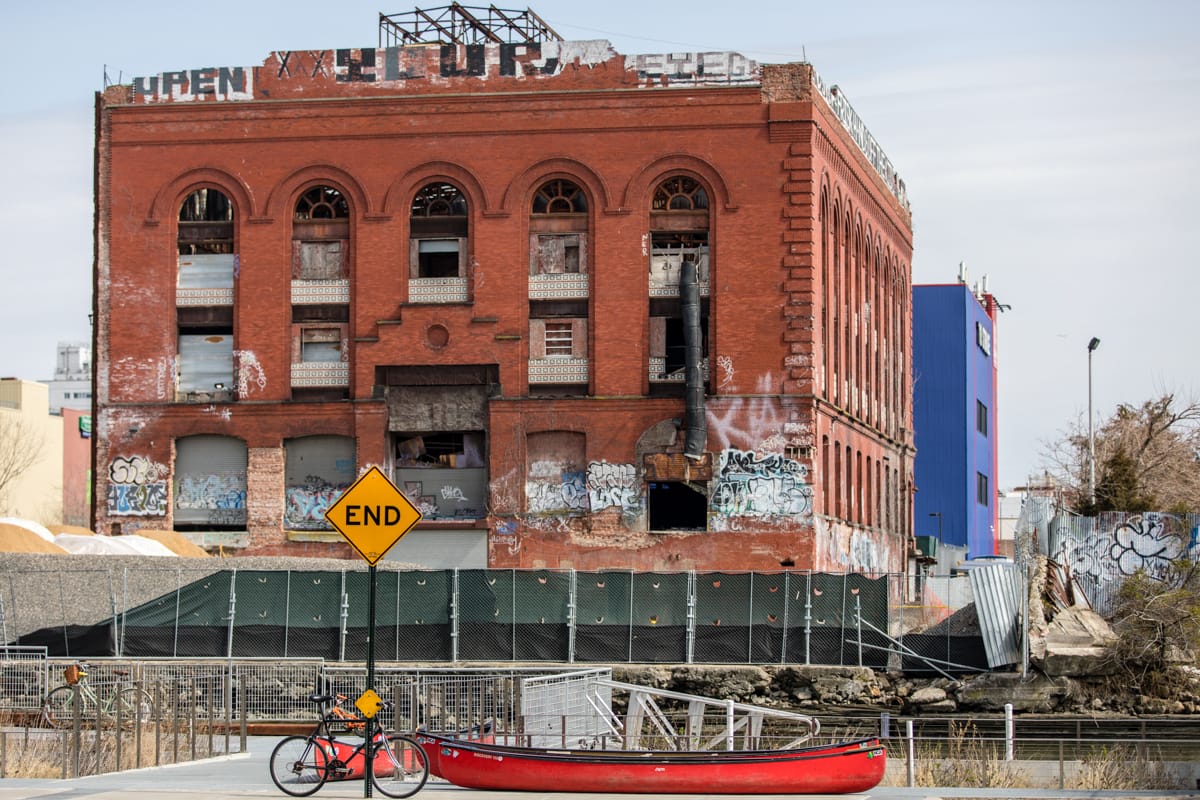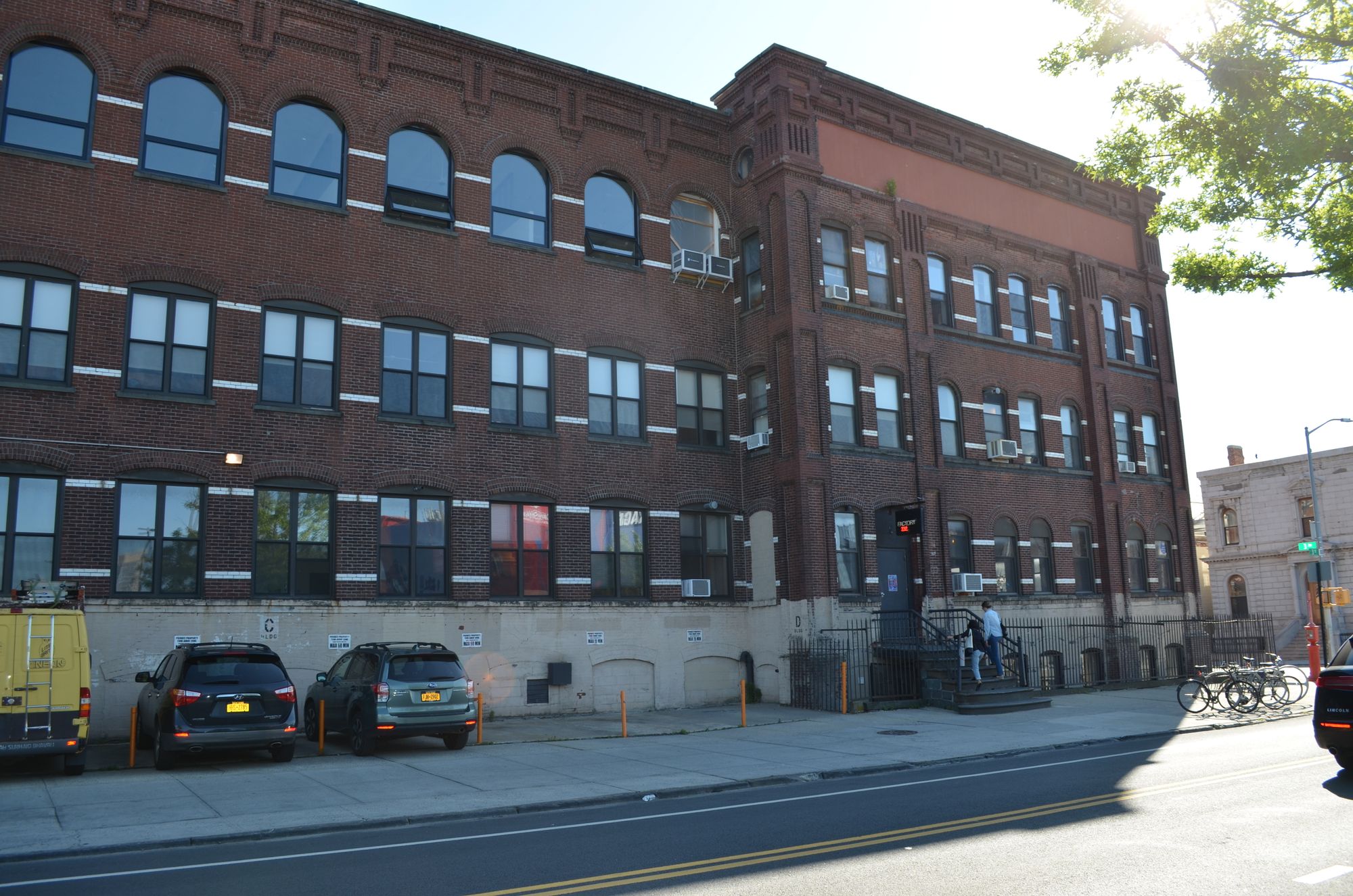Brooklyn Gets 5 Industrial Landmarks

The Landmarks Preservation Commission on Tuesday designated five industrial buildings in Gowanus as individual city landmarks, eyeing preservation as the neighborhood undergoes planned changes to increase density and sustainability, and in the wake of the demolition of the historic, 133-year-old S.W. Bowne grain storehouse in Red Hook in September, after the building was damaged in a fire.
The five buildings are the Old American Can factory (formerly the Somers Brothers Tinware factory), the Brooklyn Rapid Transit Central Power Station (better known as the Bat Cave), the Gowanus Canal Flushing Tunnel Pumping Station, the Montauk Paint Manufacturing Company building, and the old ASPCA Brooklyn Office, Shelter, and Garage. All five buildings are odes to Gowanus’ history as a manufacturing center.
The buildings were constructed between 1884 and 1913, during the heyday of manufacturing in the area. Only the pumping station, built in 1911 to flush pollutants out of the canal, is still used for its original purpose, though it was taken offline in the 1960s and wasn’t brought back online until 1999, and underwent an upgrade between 2009 and 2014.

The Bat Cave, at 3rd Street and 3rd Avenue, was built between 1901 and 1903 and provided central power to BRT trains (BRT eventually became Brooklyn-Manhattan Transit, or BMT). The site went offline in 1972, after the engine house stopped providing power to trains on the BMT’s Fourth Avenue line. The building was bought by philanthropist Josh Rechnitz in 2012, via his Powerhouse Environmental Arts Foundation, and is being redeveloped as an arts center known as the Powerhouse Workshop.
Over the years after the site went offline, the Bat Cave became a home and community for squatters and underground artists, and the walls have since become what the New York Times described as a “temple of graffiti.” In 2013, a spokesperson for Rechnitz told Gothamist that the space would no longer be allowed to host underground parties and shows, instead becoming a more organized space for artists. The proposal for the Bat Cave includes constructing a six-story addition over the former boiler house.
The Bat Cave, along with the other spaces, were identified by community activists as sites in need of preservation before the commencement of the Gowanus rezoning. The Gowanus Landmarking Coalition in 2011 started identifying buildings and pushing leaders to preserve the buildings.
“Landmarking these five properties will help to preserve some of the significant architectural and industrial structures in Gowanus. These buildings represent and illustrate the Gowanus corridor’s authentic industrial past,” said Linda Mariano, a co-founder of the Gowanus Landmarking Coalition.

The oldest of the buildings is the Old American Can building, which was built in 1884 as the Somers Brothers Tinware factory. The LPC says that Somers Brothers were “the first known tinware lithographers in the United States and the largest American decorated tinware firm.” Somers Brothers was acquired in 1901 by American Can, which became the world’s largest manufacturer of tin cans. The 130,000 square foot space has been home to affordable studio space for artists since the 1970s. The developer XØ Projects plans to add affordable studio space as well as offices, public space, and light manufacturing, and work-live units with some reserved for low-income and senior artists.
The “newest” is the old ASPCA building on Butler Street, which opened in 1913 and was the largest animal shelter in the country at the time. The shelter was in use by the American Society for the Prevention of Cruelty to Animals until 1981. Today it houses a bar, restaurant, and music venue called Public Records. The LPC calls the building “a unique monument to the work of local advocates in promoting the humane treatment of animals, and to New York’s historic role at the center of the national anticruelty movement.”
The other building is the Montauk Paint Manufacturing Company building, named for its first tenant. Over the years it also housed manufacturers of corks, “decorative lea[ves],” and covers and sails for “pleasure craft.” Today it serves as an art studio.
Simeon Bankoff, executive director of the Historic Districts Council, said that the Landmarking Coalition is pleased that the administration landmarked the buildings before the rezoning. “This is one of the first times I can remember that the city has done this,” he said.
Nonetheless, he said that more buildings deserve landmarking, singling out the Roulston Warehouses on 9th Street and the East 4th Street Brewery and Icehouse Complex, along with others listed on the group’s website. “There are more to be done,” Bankoff said.




